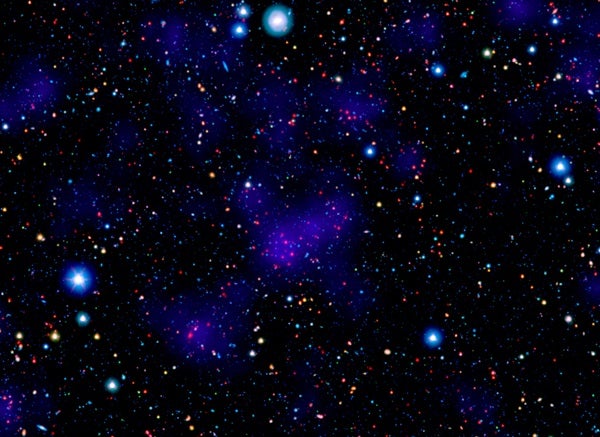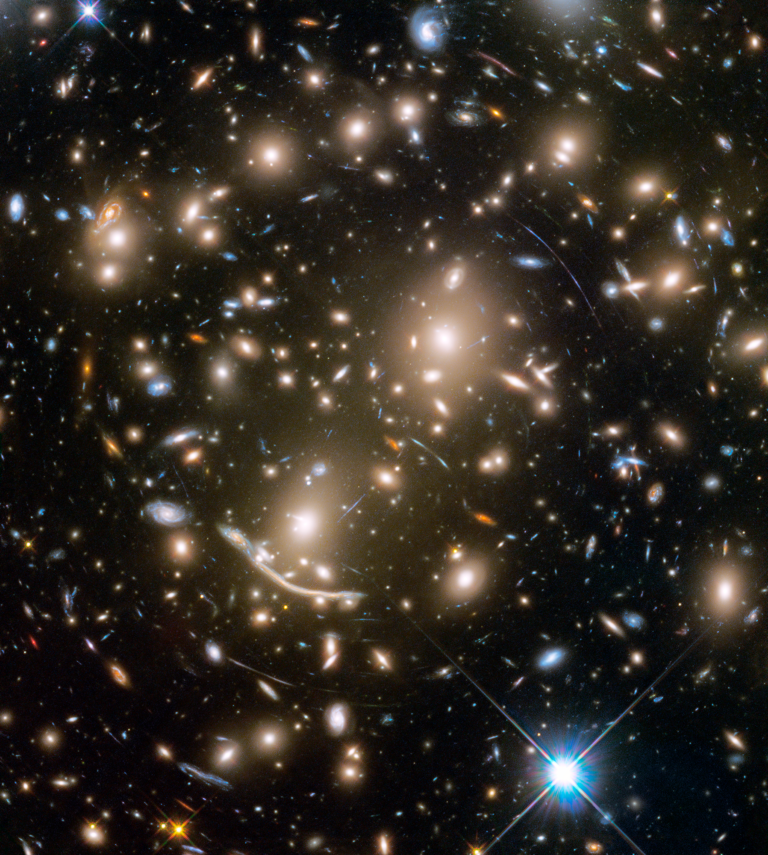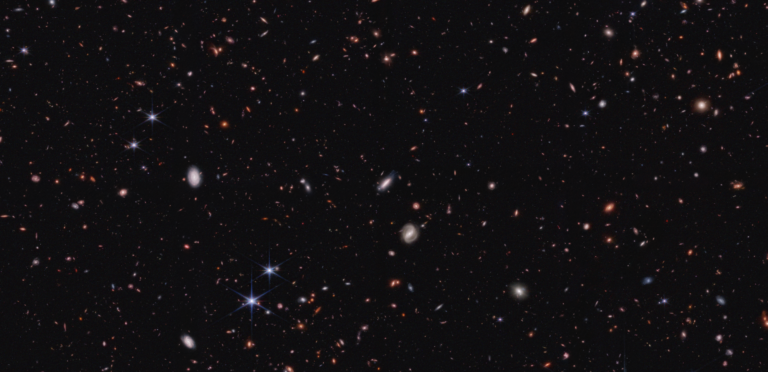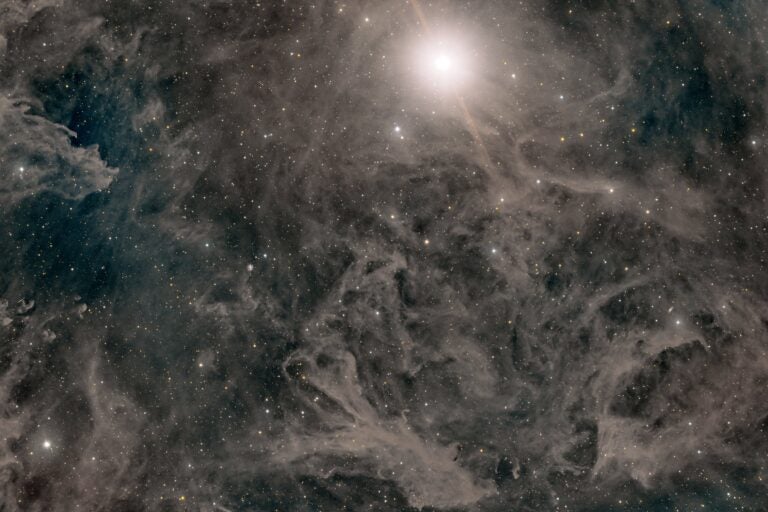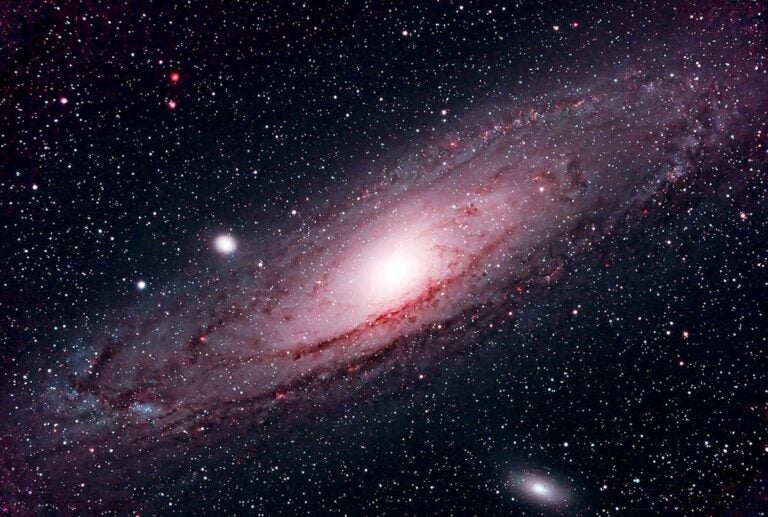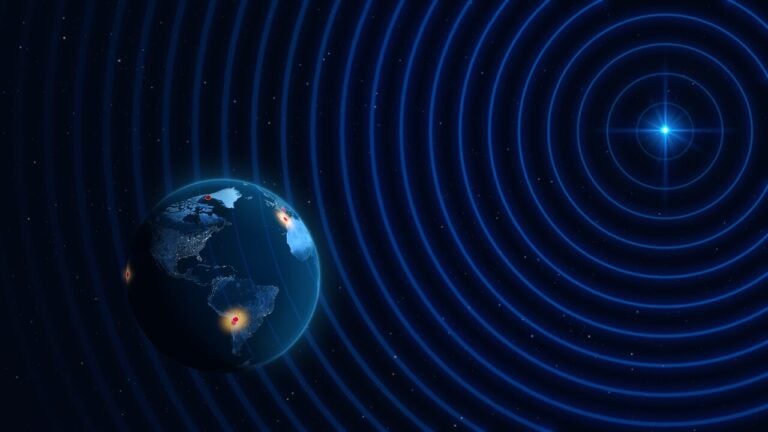The smallest things in the universe are quarks, electrons, and neutrinos — fundamental particles that cannot be further divided into anything else, so far as we know. Going the opposite way, like Alice, galaxy clusters constitute nature’s largest entities. These star cities, bound by their mutual gravity, can span more than 100 million light-years.
The question is: Do galaxy clusters evolve over time? The answer should provide us with vital clues to the nature of the universe. After all, if the old steady state theory is correct, the cosmos should eternally appear more or less the same forever. Galaxies stretch into the distance while new ones form from the steady accumulation of tiny amounts of new material that pop into existence out of empty space, at a rate too small to be noticed.

Bringing the universe to your door. We’re excited to announce Astronomy magazine’s new Space and Beyond subscription box – a quarterly adventure, curated with an astronomy-themed collection in every box. Learn More >>.
This theory’s competitor, the Big Bang, also says material pops out of nothingness — except that it was a one-shot deal during a titanic event 13.8 billion years ago. A major observational difference between these views is that, according to the Big Bang, we should only see young galaxies when we look far away, glimpsing those whose light left long ago when galaxies first formed. By contrast, according to the steady state theory, the universe would display a mixture of old and new galaxies at all distances since the cosmos, by this thinking, should appear the same everywhere.
So much evidence favors the Big Bang, however, that virtually no one buys the steady state theory anymore. One of the avenues of evidence is that, sure enough, galaxies do look different at great distances as we gaze at the light generated by long-ago events. Distant vistas display skimpier galaxy clusters and more spiral members because galaxy collisions take time. Those mergers produce the giant elliptical galaxies we see closer to us, thereby marking more recent events in the cosmological evolution.
Moreover, long-ago galaxies naturally have younger stars, which appear blue, and this paints distant galaxies with an azure glow. (Actually, they don’t visually seem blue because the redshift caused by the stretching of space makes them paradoxically look redder than nearby galaxies. But we can easily subtract this effect to determine their true prior-to-redshift color.)
All of this is simple enough, which is why a particular faraway galaxy cluster — CLG J02182–05102, found in 2010 — is so puzzling.
CLG (as we’ll mercifully abbreviate it) is composed of 60 members, including several colossal, intensely red galaxies at its center. These are true heavyweights, each populated by about 10 times more stars than reside in our Milky Way.
Such massive galaxies with ancient red stars should not exist in the early universe. Enormous galaxies need eons to develop. They create stars from their own hydrogen gas and also by slowly cannibalizing other galaxies.
Yet CLG is a fully developed system, as if today’s galaxies were transported way back in time. This galaxy cluster is also greatly over-dense and evolved, like a modern city towering over tiny primitive villages surrounding it. At that early point in the universe’s history, galaxies would still be forming their very first stars. They certainly wouldn’t have had time to gravitationally attract, and join with, a congregation of other galaxies. And their newborn stars should give the spirals a youthful blue luminescence. Yet none of that is true here. So how did they possibly have time to evolve into old galaxies?
NASA’s infrared Spitzer Space Telescope first detected CLG J02182–05102. Then an advanced spectrograph on the Carnegie Institution’s 6.5-meter Magellan telescope in Chile revealed the cluster galaxies’ high redshifts, which proved its light left 9.6 billion years ago — only a few billion years after the Big Bang itself.
We have a choice of wild, exotic answers or more pedestrian ones. In the wild department, perhaps the universe really is infinite, and the Big Bang is not the way we thought it was, so that old and young galaxies can be found everywhere, not just in our neck of the cosmic woods. If we didn’t know better, CLG would be wonderful supporting evidence for the steady state model. In the less sensational, non-tabloid department, however, perhaps this is merely an anomalously fast-growing galaxy cluster running double time through generations of star birth. Maybe we are indeed witnessing youth, albeit the early years of an unusually massive galaxy cluster that hit the ground running and now evolves at a faster pace than anything else we’ve yet witnessed.
Whatever it is, this distant, densely populated cluster of galaxies excites its discoverers at Texas A&M University. Its amazingly modern appearance, with its fully developed structures and red instead of blue stars, has everyone ecstatically baffled.
Said Casey Papovich of the Texas A&M Department of Physics and Astronomy, “It is like we dug an archaeological site in Rome and found pieces of modern [Europe] in amongst the ruins.”

